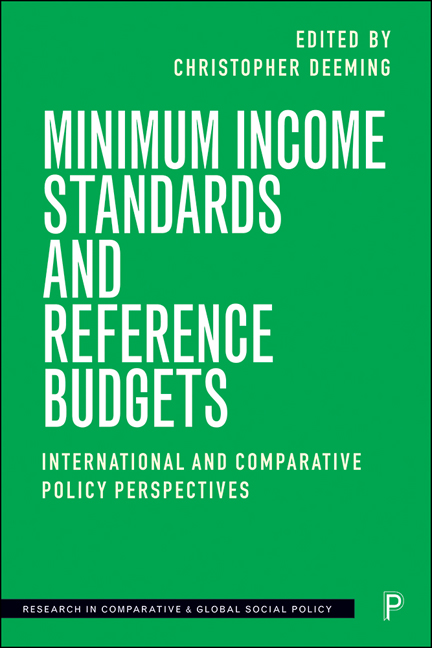16 - The Slovenian Experience with Three Methods for Defining the Minimum Income
Published online by Cambridge University Press: 12 March 2021
Summary
Introduction
This chapter presents the Slovenian experiences with three very different methods used in the last 40 years for the evaluation of minimum income. All methods are based on the evaluation of the minimum costs of living. Between 1977 and the mid-1990s, the method for the assessment of average and minimum costs of living by household types was developed and applied. The method was a combination of a normative and a positive approach. Minimum costs of living were meant to cover the ‘basic needs’. The approach adopted in 1994 and applied in practice in 2002 was based on the Orshansky (1965, 1969) methodology. Its two main elements were: (1) the nutritionally adequate food basket at the minimum cost, and (2) the share of expenditure on food in the total consumption expenditure of non-agricultural households. In 2014– 15, in the framework of the EU Pilot Project for the Development of a Common Methodology on Reference Budgets in Europe, the contents and value of the minimum consensual basket of goods related to nutrition were determined for several consumer/household types. The chapter aims to present the advantages and disadvantages of the three methods and the consequences of the practical application of two of them in Slovenia.
The different methods and approaches
The basic needs approach
In 1977, the first study on the assessment of living costs by household types was completed in Slovenia (Šumi, 1977). In 1978, potential researchers on the project and potential users agreed upon a research project, Living Costs in Slovenia, that should have provided a method for estimating living costs on a continuous basis. Potential users included the government of the Republic of Slovenia, the Chamber of Commerce of Slovenia, the Association of Trade Unions of Slovenia, the Social Security Ministries/Funds of Slovenia (Health Insurance, Pension and Disability Insurance, Social Care, Child Protection, Employment Service), and the Education Fund/Ministry. In 1982, the Housing Fund/Ministry joined them.
In 1982– 84 a fairly complex method was elaborated as a combination of a normative and a positive approach (Šumi, 1984). The positive approach was pursued through the use of the 1978 Household Expenditure Survey as a guideline for consumption patterns, whereas the normative approach was pursued through the determination of normative consumption for various expenditure categories (food, clothing, personal hygiene, healthcare, housing and heating, leisure, mobility, education, communications, social security contributions and taxes) (Stanovnik and Stropnik, 1997).
- Type
- Chapter
- Information
- Minimum Income Standards and Reference BudgetsInternational and Comparative Policy Perspectives, pp. 227 - 240Publisher: Bristol University PressPrint publication year: 2020



